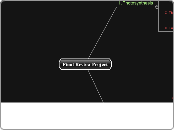Final Review Project
Photosynthesis
Definition: The process that converts carbon dioxide into organic compounds, especially sugars, using the energy from sunlight.
Photosynthetic Organisms, such as land plants, algae, and cynobacteria, are called autotrophs.
An autotroph (also known as a producer) is an organism that produces it's own food,
Producers feed themselves
Consumers depend on producers for food and surival.
The overall equation of photosynthesis:
CO2 + 2H2O -->(CH2O) + H2O + O2
Two Different Sets of Reactions
During the Light Reactions, solar energy is captured by the pigments in thylakoid membranes.
During Calvin Cycle Reactions, carbon dioxide is reduced by enzymes to a carbohydrate in the stroma.
Cellular Respiration
Definition: the set of metabolic processes that take place in the cells of organisms to convert biochemical energy from nutrients into adenosine triphosphate (ATP)
Adenosine Triphospate (atp) is a nucleotide derived from adenosine that occurs in muscle tissue; the major source of energy for chemical reactions.
also known as "oxidative metabolism".
The overall equation for cellular respiration is:
C6H12O6 + 6O2 --> 6CO2 + 6H2O + energy
The reactions involved in respiration are catabolic reactions that involve the oxidation of one molecule and the reduction of another.
Nutrients commonly used by animal and plant cells in respiration include glucose, amino acids and fatty acids
A common electron acceptor is oxygen.
